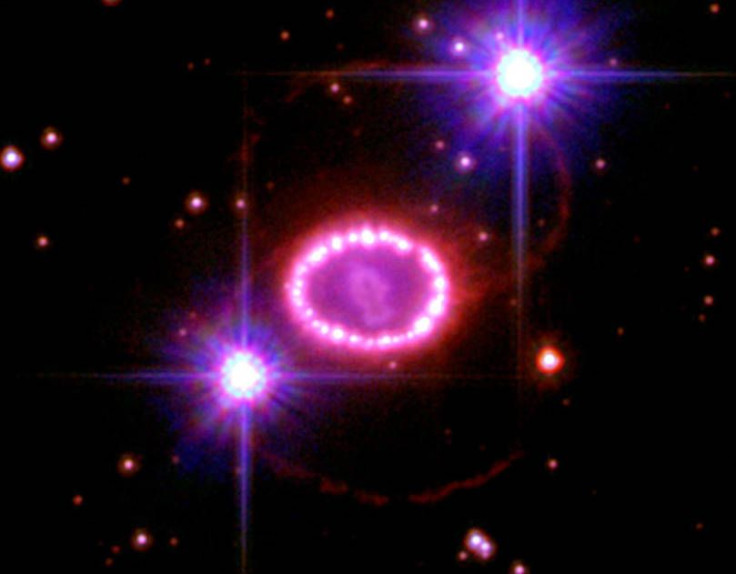Astronomers Spot Evidence Of Neutron Star Missing For 30 Years
Astronomers, on Feb. 23, 1978, spotted one of the brightest exploding stars in 400 years and the supernova, dubbed SN1987A, exploded with the power of a hundred million suns for months after it was discovered. However, for years, astronomers have not been able to find the neutron star, the smaller star born from the death of a larger star, leftover from the massive explosion.
Now, researchers from Cardiff University report finding evidence of the neutron star that has been missing for the last three decades.
Lost And Found
Using the Atacama Large Millimeter/submillimeter Array (ALMA) telescope, researchers found a patch of dust brighter than its surroundings in the area where the neutron star is suspected to be. Evidently, a thick cloud of dust had been absorbing the light from the neutron star. However, the researchers were able to see it with the sensitive ALMA telescope because the light was also making the cloud shine in sub-millimeter light.
As it happens, the idea that thick clouds were covering the star has actually been the main explanation for why the neutron star was missing all these years, but scientists were skeptical of the hypothesis and instead began to wonder whether it is their understanding of a star's life that was mistaken.
“Our new findings will now enable astronomers to better understand how massive stars end their lives, leaving behind these extremely dense neutron stars,” study lead author Dr. Mikako Matsuura said. “We are confident that this neutron star exists behind the cloud and that we know its precise location. Perhaps when the dust cloud begins to clear up in the future, astronomers will be able to directly see the neutron star for the very first time.”
The findings are published in The Astrophysical Journal.
SN 1987A
SN 1987A was discovered in the Large Magellanic Cloud galaxy just 160,000 light-years away. Because it was also the closest supernova explosion to be observed in over 400 years, it still continues to fascinate astronomers and provide useful information about the lives of stars.
Although there is no saying when we will finally get a glimpse of the neutron star behind the thick clouds of dust, the new study gives hope that, after over three decades, the missing neutron star that revolutionized our understanding of how stars' end has finally been found.

© Copyright IBTimes 2025. All rights reserved.






















